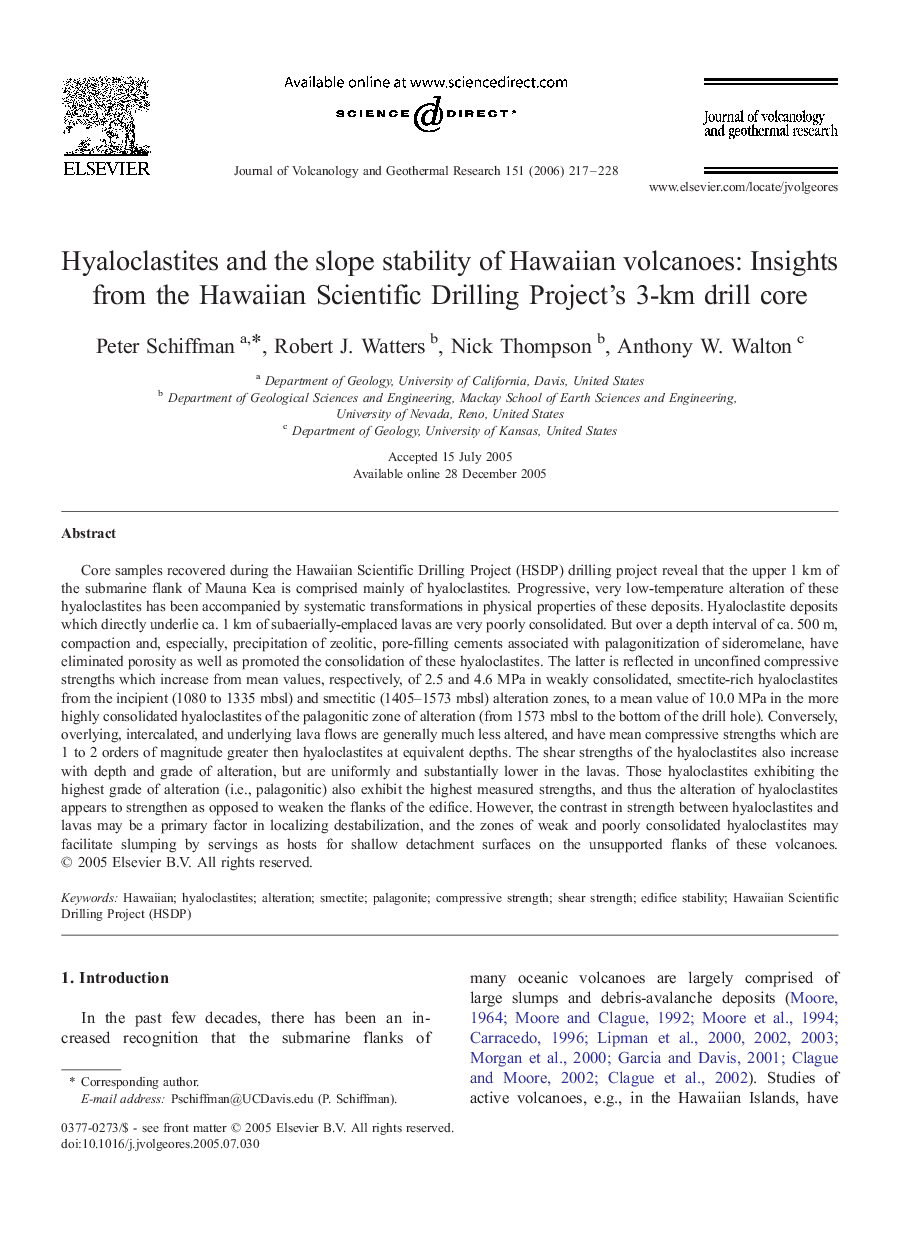| Article ID | Journal | Published Year | Pages | File Type |
|---|---|---|---|---|
| 4714365 | Journal of Volcanology and Geothermal Research | 2006 | 12 Pages |
Core samples recovered during the Hawaiian Scientific Drilling Project (HSDP) drilling project reveal that the upper 1 km of the submarine flank of Mauna Kea is comprised mainly of hyaloclastites. Progressive, very low-temperature alteration of these hyaloclastites has been accompanied by systematic transformations in physical properties of these deposits. Hyaloclastite deposits which directly underlie ca. 1 km of subaerially-emplaced lavas are very poorly consolidated. But over a depth interval of ca. 500 m, compaction and, especially, precipitation of zeolitic, pore-filling cements associated with palagonitization of sideromelane, have eliminated porosity as well as promoted the consolidation of these hyaloclastites. The latter is reflected in unconfined compressive strengths which increase from mean values, respectively, of 2.5 and 4.6 MPa in weakly consolidated, smectite-rich hyaloclastites from the incipient (1080 to 1335 mbsl) and smectitic (1405–1573 mbsl) alteration zones, to a mean value of 10.0 MPa in the more highly consolidated hyaloclastites of the palagonitic zone of alteration (from 1573 mbsl to the bottom of the drill hole). Conversely, overlying, intercalated, and underlying lava flows are generally much less altered, and have mean compressive strengths which are 1 to 2 orders of magnitude greater then hyaloclastites at equivalent depths. The shear strengths of the hyaloclastites also increase with depth and grade of alteration, but are uniformly and substantially lower in the lavas. Those hyaloclastites exhibiting the highest grade of alteration (i.e., palagonitic) also exhibit the highest measured strengths, and thus the alteration of hyaloclastites appears to strengthen as opposed to weaken the flanks of the edifice. However, the contrast in strength between hyaloclastites and lavas may be a primary factor in localizing destabilization, and the zones of weak and poorly consolidated hyaloclastites may facilitate slumping by servings as hosts for shallow detachment surfaces on the unsupported flanks of these volcanoes.
